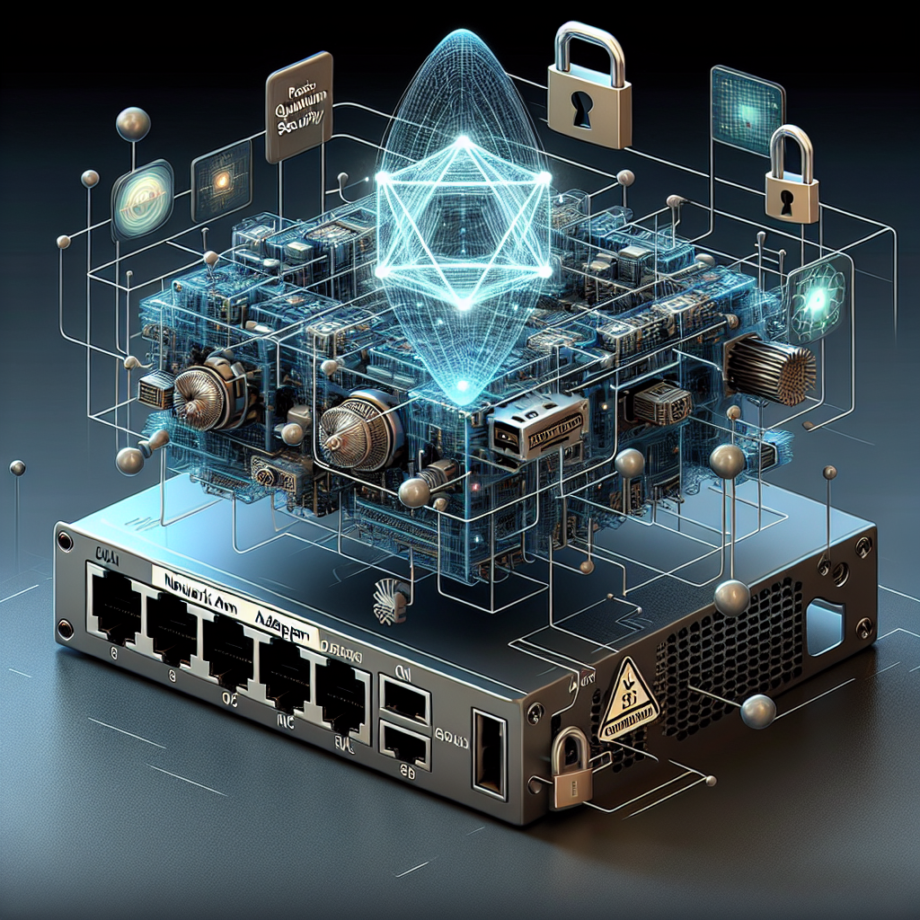
Introduction
The advent of quantum computing poses significant challenges to current cryptographic algorithms, necessitating a shift towards post-quantum security measures. Optimizing a network adapter for post-quantum security involves integrating quantum-resistant algorithms, upgrading firmware, enhancing system protocols, and ensuring robust encryption and authentication mechanisms. This comprehensive guide covers key steps to help secure your network adapter in a post-quantum world.
Understanding Post-Quantum Security
Post-quantum security refers to cryptographic approaches designed to be secure against quantum computer attacks. Quantum computers leverage quantum bits (qubits) to perform complex calculations at speeds unattainable by classical computers, threatening to break conventional encryption methods. As such, post-quantum cryptography aims to develop new algorithms capable of withstanding these quantum threats.
Key Steps to Optimize Network Adapter for Post-Quantum Security
1. Update Firmware
Updating the network adapter’s firmware is crucial to ensure it supports the latest security protocols.
- Download the latest firmware from the manufacturer’s website.
- Install the updates following the provided instructions.
- Reboot your system to apply changes.
2. Implement Quantum-Resistant Algorithms
Incorporate quantum-resistant algorithms in your network adapter’s security suite. Some recommended algorithms include:
- Lattice-based Cryptography: Utilizes complex lattice structures to enhance security.
- Hash-based Cryptography: Employs hash functions resistant to quantum attacks.
- Code-based Cryptography: Uses error-correcting codes to maintain security integrity.
3. Enhance Encryption Methods
Optimize encryption techniques by integrating advanced methods such as:
- AES-256: A widely accepted symmetric encryption standard.
- Quantum Key Distribution (QKD): Utilizes quantum mechanics principles to securely exchange encryption keys.
4. Strengthen Authentication Mechanisms
Robust authentication is vital for network security. Adopt multi-factor authentication (MFA) strategies including:
- Biometric Authentication: Uses fingerprints or facial recognition for secure access.
- Hardware Tokens: Provides physical devices that generate one-time passwords.
- Behavioral Biometrics: Analyzes user behavior patterns for authentication.
5. Upgrade Network Protocols
Implement secure network protocols designed to withstand quantum attacks. Some examples include:
- Post-Quantum TLS (PQ-TLS): An extension of the TLS protocol featuring quantum-resistant ciphers.
- Quantum-Safe VPN: VPNs that deploy quantum-safe encryption methods.
Table: Essential Quantum-Resistant Algorithms and Techniques
| Algorithm/Technique | Description |
|---|---|
| Lattice-based Cryptography | Uses complex lattice structures to enhance security. |
| Hash-based Cryptography | Employs hash functions resistant to quantum attacks. |
| Code-based Cryptography | Utilizes error-correcting codes for security integrity. |
| AES-256 | Wide-accepted symmetric encryption standard. |
| Quantum Key Distribution (QKD) | Uses quantum principles for secure key exchange. |
6. Conduct Regular Security Audits
Performing routine security audits helps identify vulnerabilities and ensure compliance with post-quantum standards.
- Schedule periodic assessments by qualified security professionals.
- Implement recommended measures promptly.
- Review and update security policies regularly.
Conclusion
Optimizing a network adapter for post-quantum security is a proactive step towards safeguarding your data against emerging quantum threats. By updating firmware, implementing quantum-resistant algorithms, enhancing encryption and authentication methods, upgrading network protocols, and conducting regular security audits, you can ensure a robust and resilient network infrastructure ready to face the future of quantum computing.
